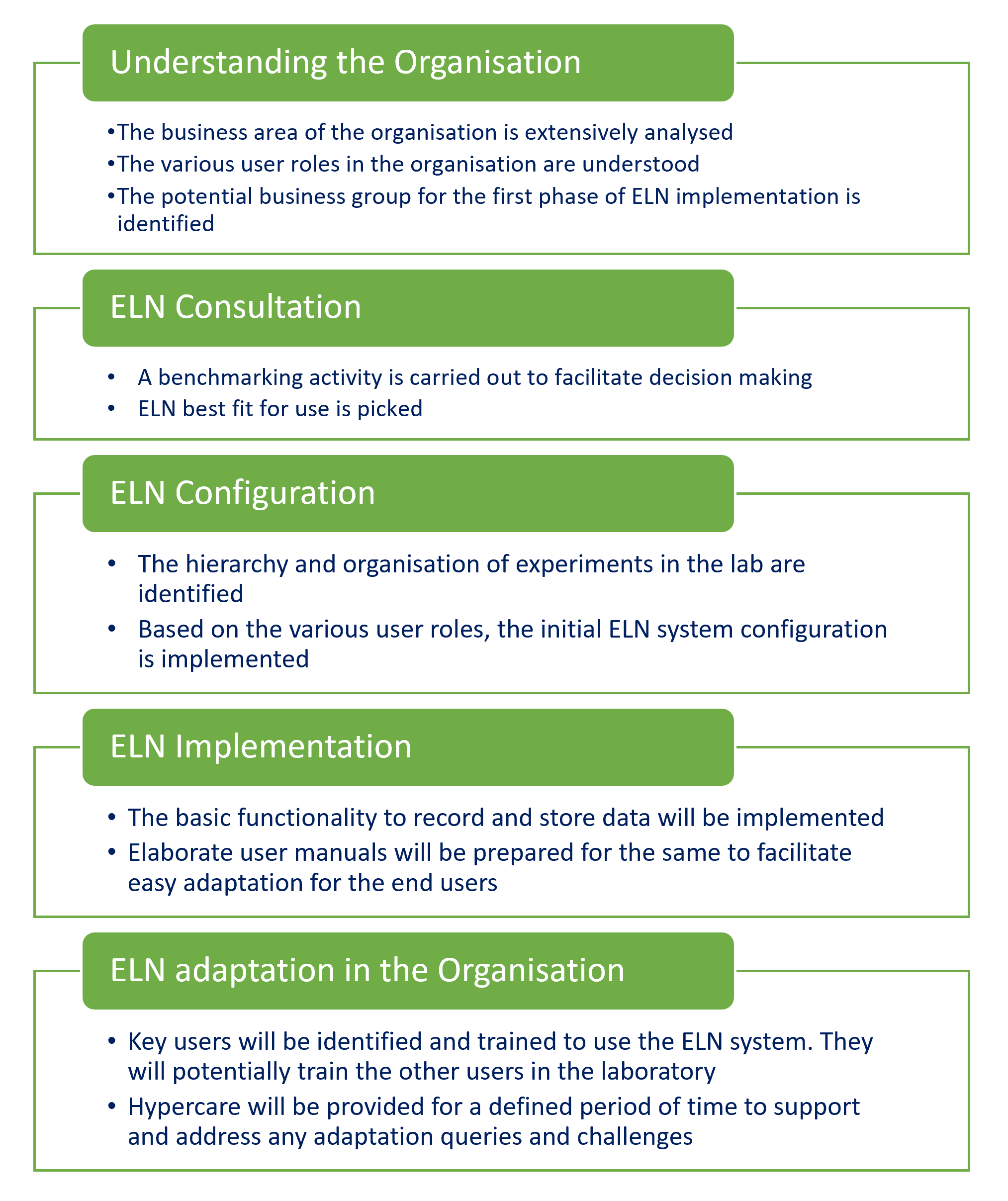A DIGITAL SCIENCE CONUNDRUM
Like any other sector, digitalization has also influenced the pharma industry, with many moving towards Pharma 4.0, aiming at simplified regulatory compliance, enhanced security of data, and ease of collaboration. The market value of ELN was around $505 million in 2018, and is expected to reach around $726 million in 2026. The recent COVID crisis has accelerated this process, with industries targeting shorter timelines and effective transitions to the digital style, with effective collaboration and accelerated research.
Recently, we had a chance to interact with one of our customers, who was having a hard time moving to an ELN platform. They said that they were keen to move into ELN as the first step in their digitalization lifecycle to reap its benefits over the traditional paper-based lab notebooks. But they found the process to be such a nightmare that they are now second-guessing their decision.

HOW TO SEAMLESSLY ADOPT AN ELN
Our curiosity grew, and we wanted to find possible reasons behind this feeling. After a quick analysis, we observed the following bottlenecks to be reasons for their difficulties in adapting to ELN:
The Selected ELN system is incompatible with the research area.
Different ELN systems are designed for different domains of research. Hence, it is important to consider the research domain of the group while selecting an ELN. If an appropriate ELN is chosen after considering the research domain, the functionalities of the system can be used at the maximum level to benefit the users.
ELN is used for just storing the data and not configured to make it usable elsewhere.
This happens when the data retrieval systems, such as searches, are not configured properly, or in cases when the data stored in ELN cannot be seen in the data visualization tools currently being used. In such cases, initially, the users will use the system just to dump in data, and eventually stop using it entirely when they realize they cannot do anything with the data stored there. Hence it is very important to set up appropriate data retrieval systems and ensure that ELN is linked to the data visualization tools that are currently in use.
Users feel ELN systems are complex and time-consuming to enter data daily.
This happens when the chosen ELN system is very complex and requires intensive training to understand how to use it. Hence, ease of use should also be considered as one of the key aspects while selecting an ELN. Also, the implementation of the ELN system should be in a gradual and phased manner, so that users have time to get accustomed to the system at each phase and have a smooth transition.
With these points in mind, we proposed a methodology that would address all their current perceptions/concerns, and eventually ensure this transition is seamless.
With the proposed solution, we saw several customers going ahead with rolling out ELN, overcoming the reservations that they had in the initial stages. Eventually, the ELN was successfully rolled out in a phased process.
KEY TAKEAWAYS
The following concerns of our customer regarding the traditional paper lab notebooks were addressed in this process of digitization:
Searchability
Before ELN. Manual searching is tedious; key facts may be missed out in the process.
After ELN Rollout. Searches are automated; easier with fewer chances of errors.
Security.
Before ELN. Anyone with access to the notebook can view the data and modify it.
After ELN Rollout. Access to view and edit the data can be restricted, to allow only specific users to edit or view the data.
Data collaboration.
Before ELN. Collaboration across different sites is difficult and time-consuming; the chances of a data breach cannot be ignored in this process.
After ELN Rollout. Collaboration of data across sites is much easier and safer.
Uniformity.
Before ELN. It may not be in a uniform format across different users, because of which important data may be missed or not captured.
After ELN Rollout. A predefined format will be designed for capturing data in a uniform and easily readable manner.
Calculations.
Before ELN. Must be done manually; time-consuming. High chances of errors
After ELN Rollout. Can be automated; takes less time. Chances of errors are minimal.
Audit Trail.
Before ELN. Difficult to maintain; not foolproof always.
After ELN Rollout. Can be configured to comply with regulatory requirements
Any “Change Management” process is sensitive to people’s emotions and is done with utmost care to take people along.
A thorough analysis of the user needs, selecting the correct platform, and following a gradual, phased approach with adequate end-user training will make this transition smooth and comfortable until many more user groups adopt ELN.
To find out more about how Zifo can help with your ELN and Digitalisation, please email us at info@zifornd.com


